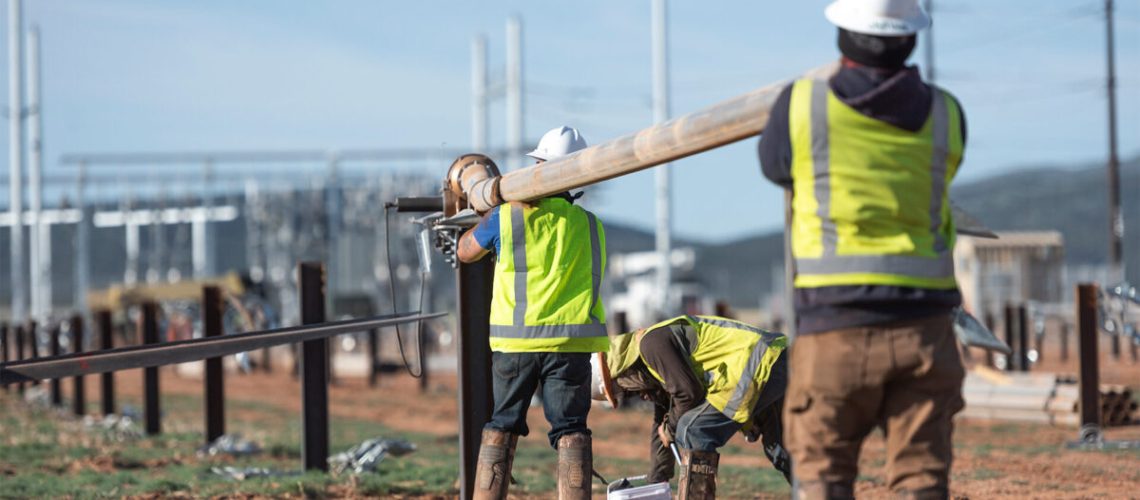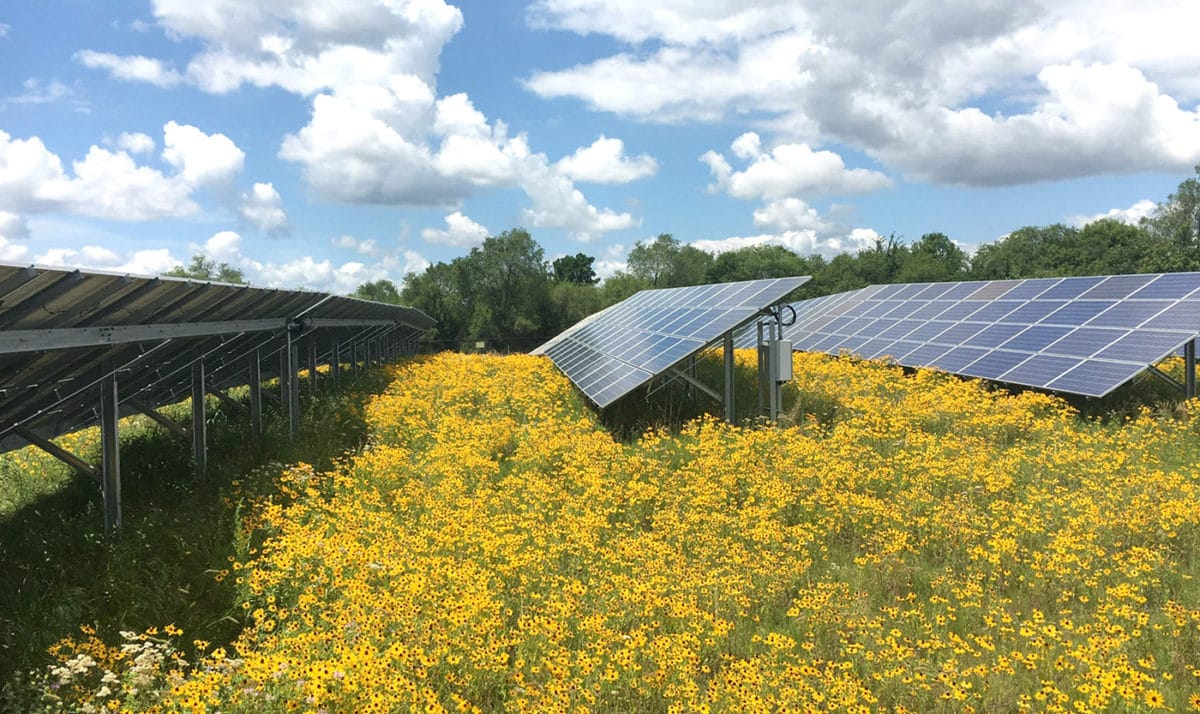Payment of a prevailing wage to workers and employment of apprentices are key requirements for renewable energy developers to obtain the various tax incentives for their projects provided by the Inflation Reduction Act of 2022 (“IRA”). A little over a year following enactment of the IRA, and nine months after release of the initial guidance, on August 30, 2023, the Treasury Department and IRS released the Notice of Proposed Rulemaking (“NOPR”) on prevailing wage and apprenticeship requirements.
The November 30, 2023, initial guidance (“Initial Guidance”) still governs prevailing wage and apprenticeship requirements, but the clock is ticking: taxpayers may rely on the NOPR beginning October 30, 2023.
(Read: “The clock is ticking on the IRA’s prevailing wage and apprenticeship requirements“)
The NOPR provides useful clarifications and additional details helpful for taxpayers evaluating their project compliance strategies but still leaves certain details open to interpretation. The NOPR is, of course, not the final regulation, but it is an additional step in the rulemaking process open to comments from the public.
Overall, the NOPR is consistent with the Initial Guidance (outlined in our article here), with key updates outlined below.
Prevailing wage and apprenticeship requirements apply to all “construction, alteration or repair” of a qualified facility, and continue through any portion of a taxable year within the 10-year period beginning on the date the qualified facility is placed in service. But the NOPR provides a key clarification for plant operations: it specifies that “construction, alteration or repair” does not include “work that is ordinary and regular in nature that is designed to maintain and preserve existing functionalities of a facility after it is placed in service.”
It provides examples of basic operations and maintenance services and notes that such services do not include (and therefore, that prevailing wage and apprenticeship requirements do apply to) work that “improves a facility, adapts it for a different use, or restores functionality as a result of inoperability.” In other words, the NOPR holds that routine O&M services are likely not subject to prevailing wage and apprenticeship requirements – a detail that was not evident from the Initial Guidance.
The NOPR and Prevailing Wage requirements
The NOPR confirms the IRA is not a Davis-Bacon Related Act (“DBRA”), and therefore that compliance with prevailing wage requirements does not require DBRA certified payroll. Generally, the NOPR incorporates DBRA guidance regarding wage determinations and definitions (for example: laborer/mechanic, construction, alteration or repair, wages, employed) for purposes of prevailing wage compliance – but it excludes required contractual incorporation of DBRA provisions and certified payroll mechanisms.
Prevailing wage records pursuant to the IRA should not be submitted to the Department of Labor (“DOL”) for certification, and the DOL is not involved in enforcement mechanisms for noncompliance. The only consequence of noncompliance with prevailing wage requirements is loss of ability to claim IRA tax incentives.
Many developers and contractors were concerned about the uncertainty of regularly-updated prevailing wage determinations provided by the DOL (particularly in light of the August 23, 2023 final rule Updating the Davis-Bacon and Related Acts Regulations). The NOPR eased these concerns by clarifying that the applicable prevailing wage published when construction begins applies throughout the project, without the need to continue to update the wage if a new determination is published.
Wage determinations for individual projects, where SAM.gov published wages are not available, may be requested from the DOL pursuant to DBRA procedures (but, consistent with the Initial Guidance, also allowing email requests to IRAprevailingwage@dol.gov).
A wage determination, once issued, is binding on the project and can be “supplemental,” addressing selected labor classifications needed for a specific project and not already published. The NOPR confirmed the Initial Guidance’s direction to include specified information on any wage determination requests, and also expressly adopted Davis-Bacon Act review and appeal procedures for wage determination requests.
The NOPR and Apprenticeship requirements
The NOPR also provides additional clarity around the IRA’s labor hour, ratio, and participation requirements for registered apprentices. Of note, the apprenticeship ratio requirement, requiring that applicable apprentice-to-journeyworker ratios be satisfied, is a daily requirement. If the applicable apprentice-to-journeyworker ratio is not satisfied on any given day, the apprentice hours for that day do not count toward the labor hour requirement.
Additionally, if any registered apprentices in excess of the applicable ratio perform work on the facility, such apprentices must be paid the full prevailing wage rate for any hours worked. In contrast, the apprenticeship participation requirement is not a daily requirement. A contractor cannot spread out personnel schedules to avoid triggering the participation requirement. The participation requirement is designed to prevent taxpayers from satisfying the labor hours requirement by only hiring apprentices to perform one type of work – encouraging the use of apprentices across the full range of work performed with respect to the facility.
Similarly, the IRA’s good faith effort exemption is not a get-out-of-jail-free card. The good faith effort exemption allows taxpayers to satisfy the apprenticeship requirements by showing good faith efforts to obtain qualified apprentices from registered apprenticeship agencies, if the request is made in accordance with the usual and customary business practices of the registered apprenticeship agency and the request is denied or not responded to within five business days.
The NOPR, however, sets forth additional restrictions on use of the good faith effort exemption, noting that the apprentices should be requested from registered apprenticeship agencies with the necessary geographic scope, occupational training, and customary practice of placing apprentices with employers and also identifying the specific information that must be included on written requests for apprentices to registered apprenticeship programs. This requires the taxpayer to ascertain its workforce needs to determine how many qualified apprentices its needs to employ in order to satisfy the apprenticeship requirements; to identify applicable registered apprenticeship programs reasonably available to supply apprentices to the facility; and to demonstrate the capacity to employ apprentices in the requested occupations.
In addition, the NOPR provides that a one-time denial of a written request to a registered apprenticeship program does not automatically qualify the taxpayer for the good faith effort exemption. In the event of a complete denial of a written request, the taxpayer must also submit an additional request within 120 days of the previous request. Taxpayers may (and in all likelihood, will) need to submit a written request to more than one registered apprenticeship program in order to satisfy the good faith effort exemption.
The NOPR and overall compliance
In a boost to labor unions, the NOPR sets forth a new “Qualified Project Labor Agreement” (“Qualifying PLA”) concept, which provides that penalty payments for failure to meet prevailing wage and apprenticeship requirements will not apply if the facility is subject to a project labor agreement meeting certain requirements (provided that, any correction payments owed are paid on or before the tax return is filed).
A Qualifying PLA must, at a minimum: (a) bind all contractors and subcontractors on the construction project through the inclusion of appropriate specifications in all relevant solicitation provisions and contract documents, (b) contain guarantees against strikes, lockouts, and similar job disruptions, (c) set forth effective, prompt, and mutually binding procedures for resolving labor disputes arising during the term of the project labor agreement, (d) contain provisions to pay prevailing wages, (e) contain provisions for referring and using qualified apprentices consistent with the Initial Guidance, and (f) be a collective bargaining agreement with one or more labor organizations. In other words, a non-union or open-shop contractor cannot insulate itself from potential penalty payments using the Qualified PLA concept.
The NOPR, however, also helpfully provides practical flexibility prior to imposing penalties for “intentional disregard” of prevailing wage and apprenticeship requirements – significantly easing concerns of potential penalty obligations based on good faith mistakes and administrative burden. The IRA provides that failure to pay prevailing wages with intentional disregard results in a tripled correction payment and doubled penalty payment; and failure to comply with apprenticeship labor hours or participation requirements with intentional disregard results in a tenfold increase in penalty payments, from $50 per labor hour to $500 per labor hour.
Intentional disregard, according to the NOPR, must be “knowing or willful,” based on a determination “made by considering all facts and circumstances,” including whether the failure was part of a pattern of conduct or the absence of exercising reasonable diligence. From the prevailing wage perspective, the NOPR incorporates by reference mitigating factors mirroring DBRA requirements, which taxpayers will do well to heed as a protection against penalties. Those factors include posting prevailing wage rates at the facility site, incorporating prevailing wage provisions in project agreements, and undertaking quarterly or more frequent reviews of wages paid to ensure they are prevailing wages.
In addition, if a taxpayer submits a DOL wage determination request prior to work beginning, and the DOL wage determination is issued after work begins, penalties will not be imposed if the applicable correction payment is made to impacted individuals within thirty days of the DOL wage determination. In addition, correction payments to individuals may be made at any time in advance of the filing of a tax return claiming the increased credit (potentially limiting the amount of additional interest the taxpayer must pay at the elevated rates).
If a taxpayer makes correction payments before receiving a notice of examination with respect to the claim for the increased credit, the NOPR provides a rebuttable presumption against a finding of intentional disregard. In other words, the NOPR broadcasts the intent to incentivize taxpayers to promptly self-correct errors in compliance with prevailing wage and apprenticeship requirements, waiving the penalty payments for such correction and minor discrepancies.
In conclusion, the NOPR provides helpful additional instruction to parties seeking to ensure compliance with prevailing wage and apprenticeship requirements pursuant to the IRA. As the renewable energy industry adapts to this new normal, the NOPR outlines a more pragmatic path to compliance than many in the industry had feared based on Treasury’s Initial Guidance. Some questions remain unanswered (including the timing of DOL responses to wage determination requests and the lack of standard reporting forms), but the NOPR allows parties to begin negotiating appropriate provisions in project agreements with more certainty on the compliance standards necessary to satisfy prevailing wage and apprenticeship requirements.
Monica Dozier and Amy Puckett are attorneys at Bradley Arant Boult Cummings LLP who regularly advise clients on labor and employment issues in the renewable energy industry.






